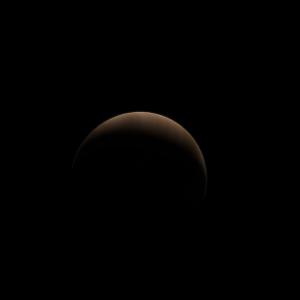|
|
Space Astro
|
Info for exoplanet "Hemogyu"
| Scientific (actual) data |
|---|
| Name | 2MASS J0506+5236 |
| Planet status | Confirmed |
| Planet mass | 26 |
| Radius | 1.05 |
| Discovered | 2022 |
| Updated | 2022-01-23 |
| Temperature (kelvin) | 1065 |
| Log g | 4.74 |
| Publication | Published in a refereed paper |
| Detection type | Imaging |
| Mass measurement type | Spectrum |
| Radius measurement type | Flux |
| Alternate names | 2MASS J05065012+5236338 |
| Right ascension | 76.71° |
| Declination | 52.61° |
| Star distance | 17.6 |
| Wikipedia article | 2MASS J0506+5236 |
Back
| |
| Fictional info (?) |
|---|
| Suggested name | Hemogyu |
| Planet type | Huge cold gas giant |
| As seen relative to the fixed stars, it rotates on its axis exactly two times for every four revolutions it makes around @STARNAME. As seen from @STARNAME, in a frame of reference that rotates with the orbital motion, it appears to rotate only once every two years.
.
The smooth Borealis basin in the northern hemisphere covers 23 percent of the planet and may be a giant impact feature.
The two polar ice caps appear to be made largely of sand. |
| Atmosphere | Carbonyl sulfide | 98% |
| Nitric oxide | 1.7% |
| Krypton | 0.018% |
| Atmospheric pressure | 0.001 bar |
 |
| Moon | Tapaba Jisere'ku | Small slightly egg-shaped rocky moon |
| Ahyosho Tsu | Very small slightly egg-shaped rocky asteroid |
| Bibyawa-pyomee-n | Large round ice comet |
| Busho | Medium-sized round rocky planetoid |
| Hegikyo | Small almost round crater-filled asteroid |
| Memyakyo-mebo | Large potato shaped oceanic comet |
| Tepa-sa | Medium-sized round ice moon |
| Funhyo-daakya Nyu | Huge round rocky planetoid |
| Dakushi Yofuso Su | Huge slightly egg-shaped rocky asteroid |
| Shisa Iwaryo Mya | Medium-sized round oceanic planetoid |
| Chizopi | Large round gaseous moon |
| Google search for Hemogyu |
|
Website by Joachim Michaelis
|
|
|
|